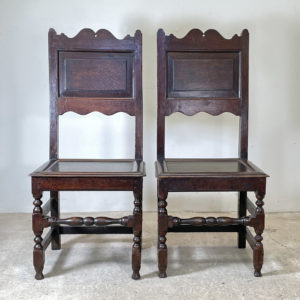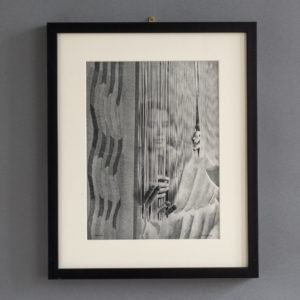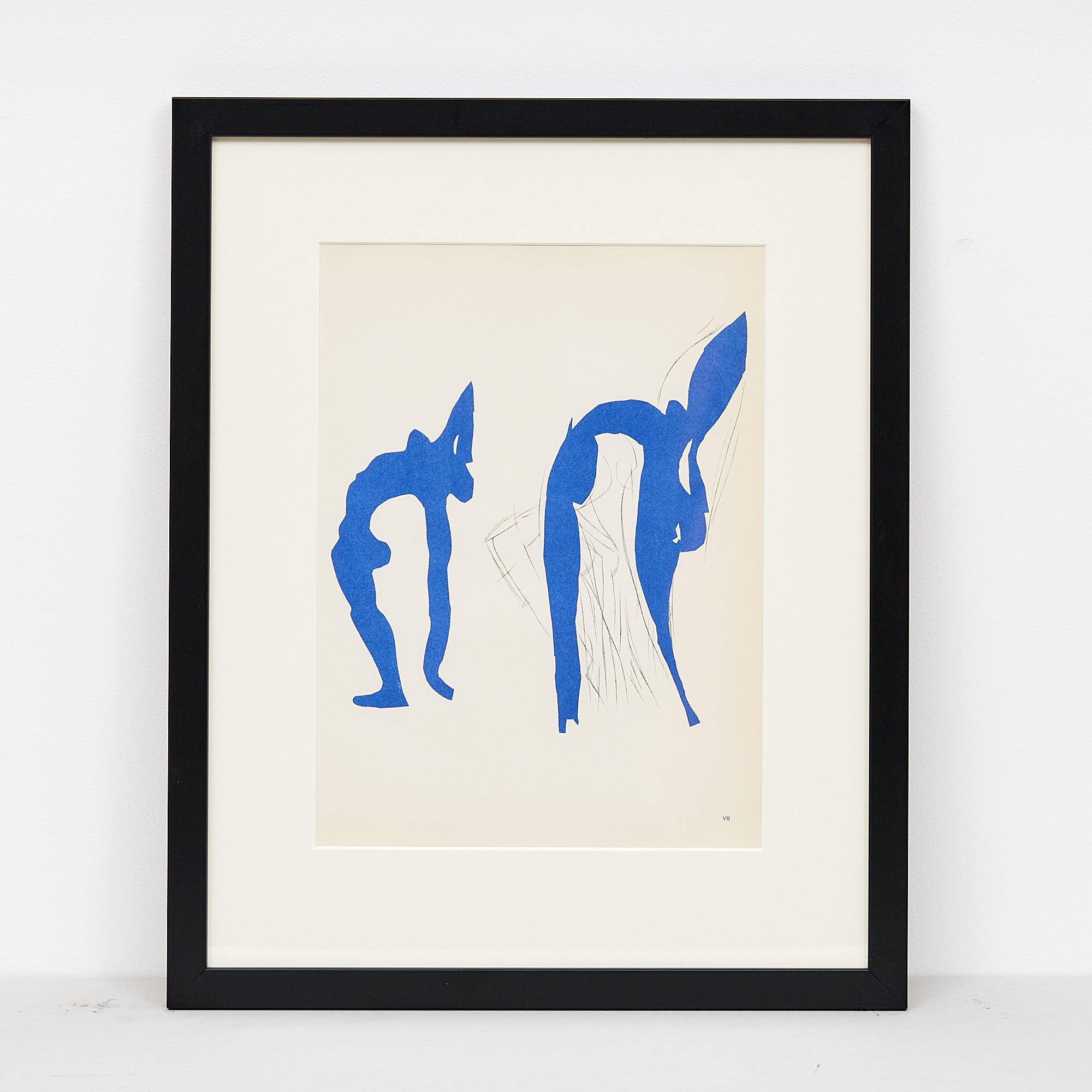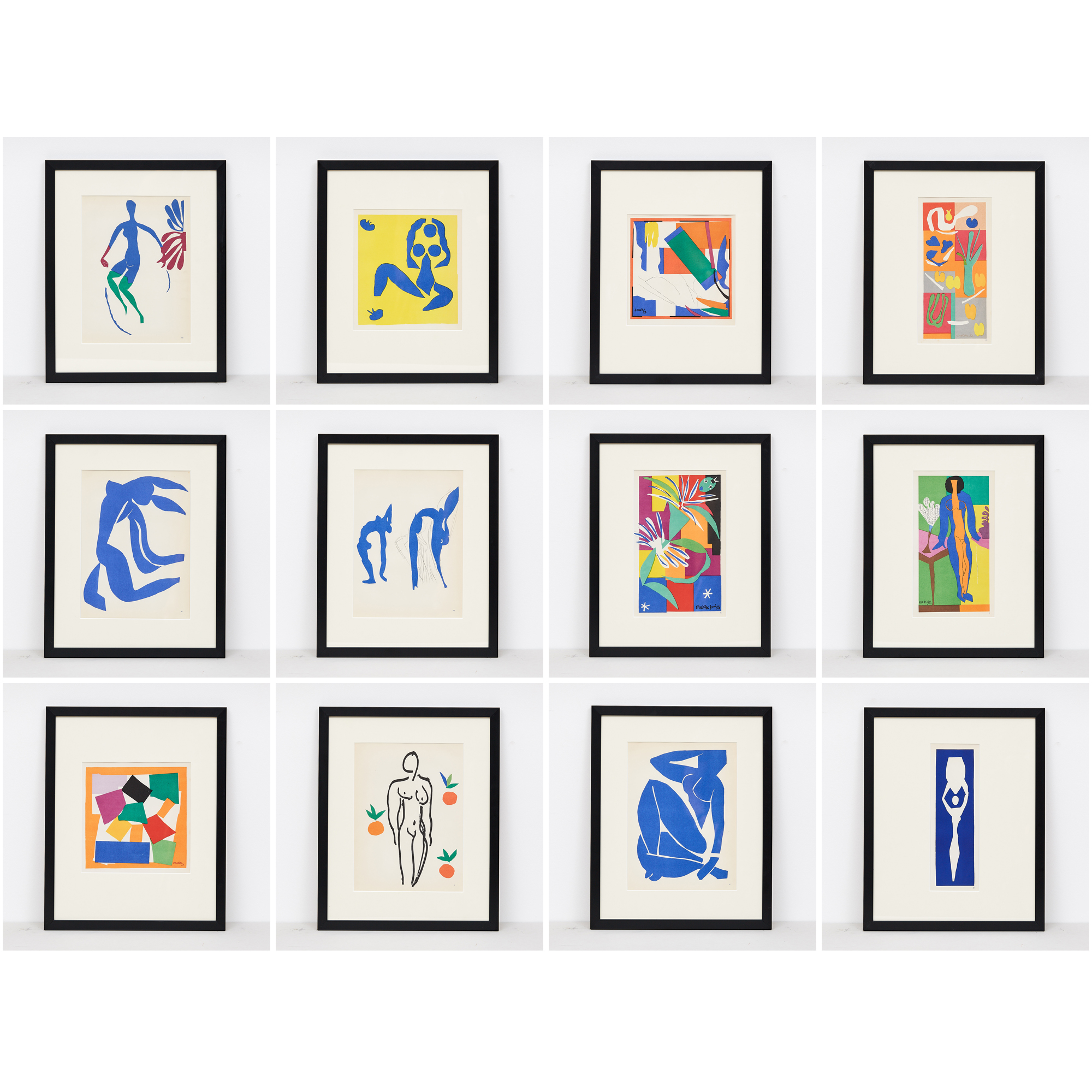Archived Stock - This item is no longer available
Matisse ‘cut-out’ Lithograph,
From the atelier Mourlot Freres.
In his late sixties, when ill health first prevented Matisse from painting, he experimented with cutting into painted paper with scissors (gouache decoupée). Necessity had caused Matisse to invent an entirely new medium. Matisse later worked closely with the Parisian Lithographer Fernand Mourlot to create this series of Lithographs depicting his new creations. The two men worked together until Matisse's death in 1954. In recognition of this the Mourlot-Matisse Lithographs have been named 'The Last Works'.
SOLD OUT
In stock
Recently Viewed Items
-

A pair of early eighteenth century oak side chairs,
£600A pair of early eighteenth century oak side chairs,
the cupid's bow top rail and raised and fielded back panel over the box stretcher seats with bobbin and baluster turned fore-timbers, dowel joined, seats rebuilt; condition commensurate with age, but sound overall,£600 -

Photographs from Verve, December 1937. Gobelins / Makowska
£250 eachPhotographs from Verve, December 1937. Gobelins / Makowska
The Verve Review, from its very inception, was a purposefully luxurious art publication. It ran from 1937 to 1960, but for only 38 editions, due to the high degree of design and editorial work dedicated to each issue. Its editor was Stratis Eleftheriades, a Greek National who moved to Paris in the early thirties to take part in the growing Modernist movement, writing under the name of Teriade. As an art critic, patron and gallery owner he commissioned various individuals, artists, photographers and philosophers to contribute to it. Héliogravure is a process for printing photographs that was developed in the first half of the 19th century. It is a photo-mechanical process whereby a copper plate is grained and then coated with a light-sensitive gelatin tissue which had been exposed to a film positive, and then etched, resulting in a high-quality intaglio plate that can reproduce detailed continuous tones of a photograph.£250 each


